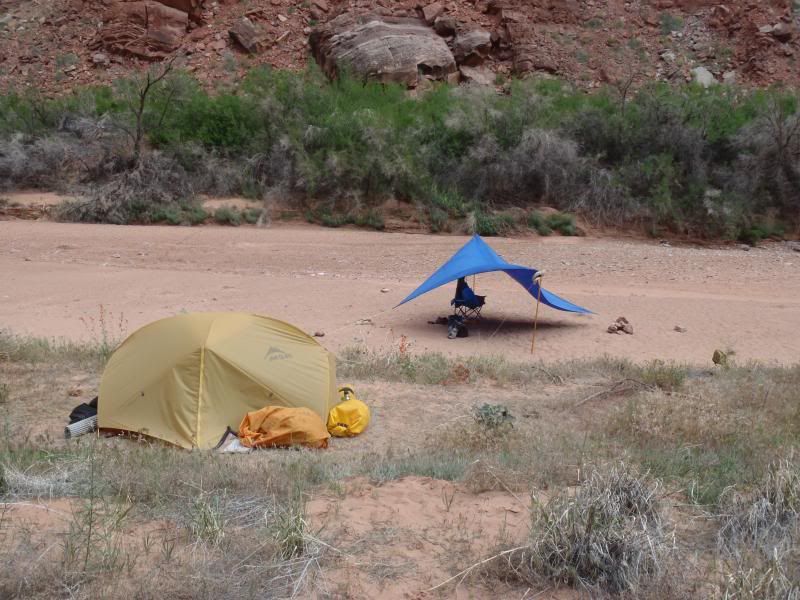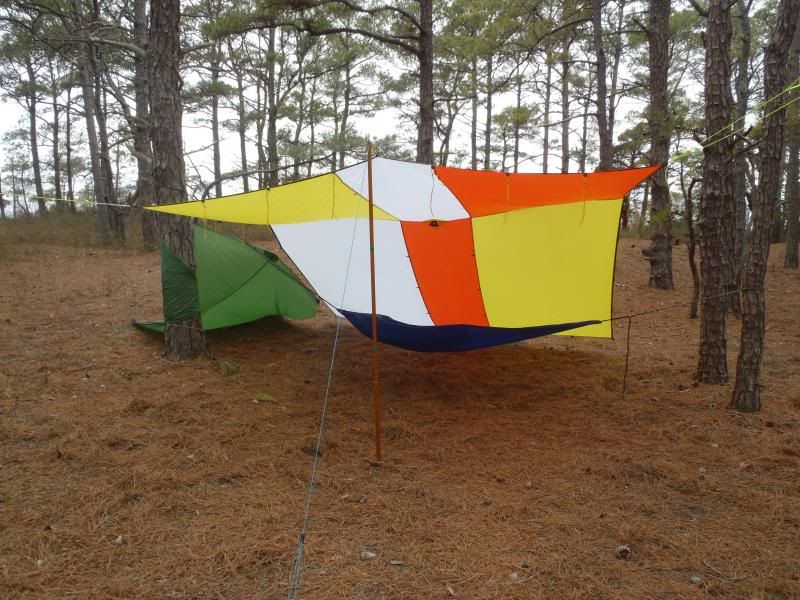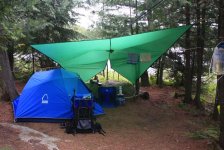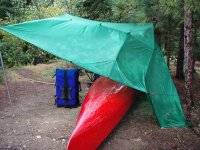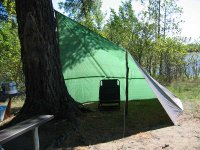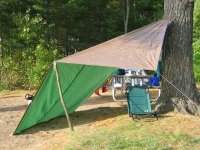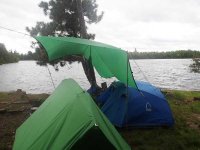G
Guest
Guest
I have an experiment I want to try using a small parawing. At least 12’ long on the taller “ridgeline” axis, or maybe 14’ at most. But every wing I’ve found is either too large or too pricey to hazard for an experiment.
I’ve been through enough unsatisfactory tarps to appreciate functionally designed and strengthened tie down points that resist ripping out in the wind, and I intend to expose this experiment to wind and rough treatment. If I knew this experiment would work I’d pop for a CCS Tundra Tarp, but I’d rather have a simple wing.
I have an old true-catenary cut parawing, with no tie downs other than doubled webbing loops at each corner, it is bombproof in the wind and rain and is inherently easy to set up. Even in two-pole no-tree configuration as long as the guylines extend out aligned with the perimeter edges of the <> tarp it is wind shedding no-flap solid even in extreme conditions.
That long-ago Campmor branded cheapie is simplistic in design and packs relatively small for urethane coated nylon, but it’s an 18 footer and is several feet too long on the axis ridgeline for my purposes.
I’ve Googled and searched with no success. Every decently thought out parawing I’ve found is too big. What’s out there in small wings?
I’ve been through enough unsatisfactory tarps to appreciate functionally designed and strengthened tie down points that resist ripping out in the wind, and I intend to expose this experiment to wind and rough treatment. If I knew this experiment would work I’d pop for a CCS Tundra Tarp, but I’d rather have a simple wing.
I have an old true-catenary cut parawing, with no tie downs other than doubled webbing loops at each corner, it is bombproof in the wind and rain and is inherently easy to set up. Even in two-pole no-tree configuration as long as the guylines extend out aligned with the perimeter edges of the <> tarp it is wind shedding no-flap solid even in extreme conditions.
That long-ago Campmor branded cheapie is simplistic in design and packs relatively small for urethane coated nylon, but it’s an 18 footer and is several feet too long on the axis ridgeline for my purposes.
I’ve Googled and searched with no success. Every decently thought out parawing I’ve found is too big. What’s out there in small wings?

